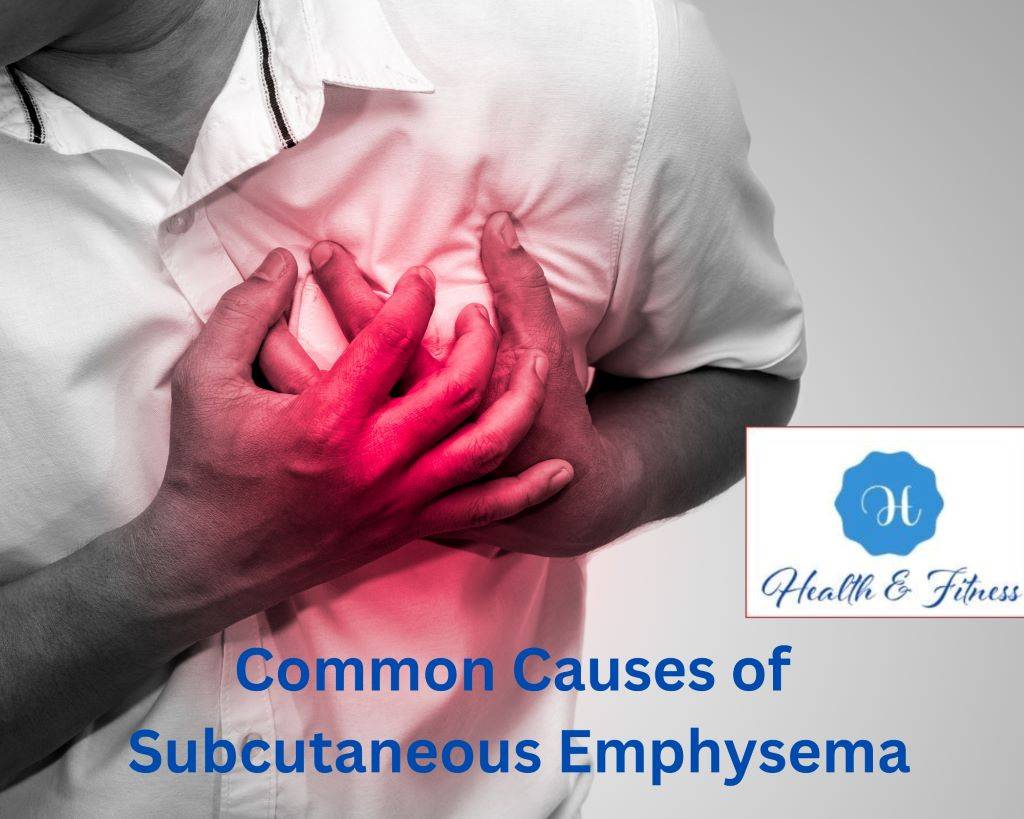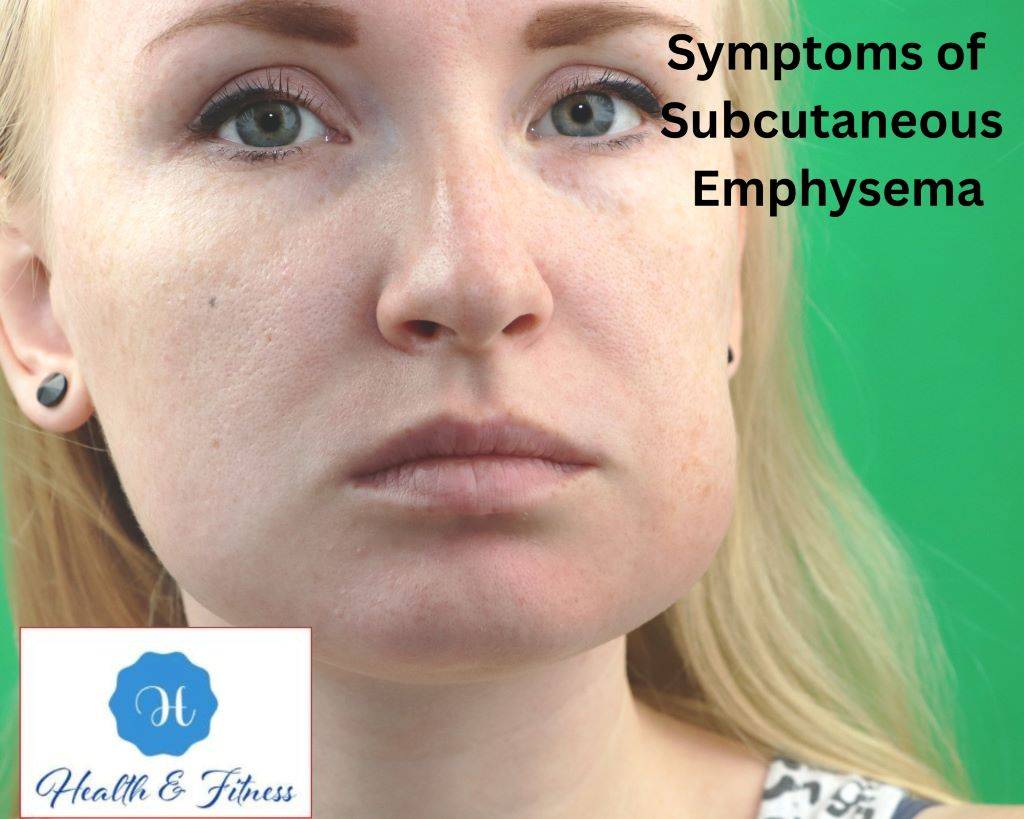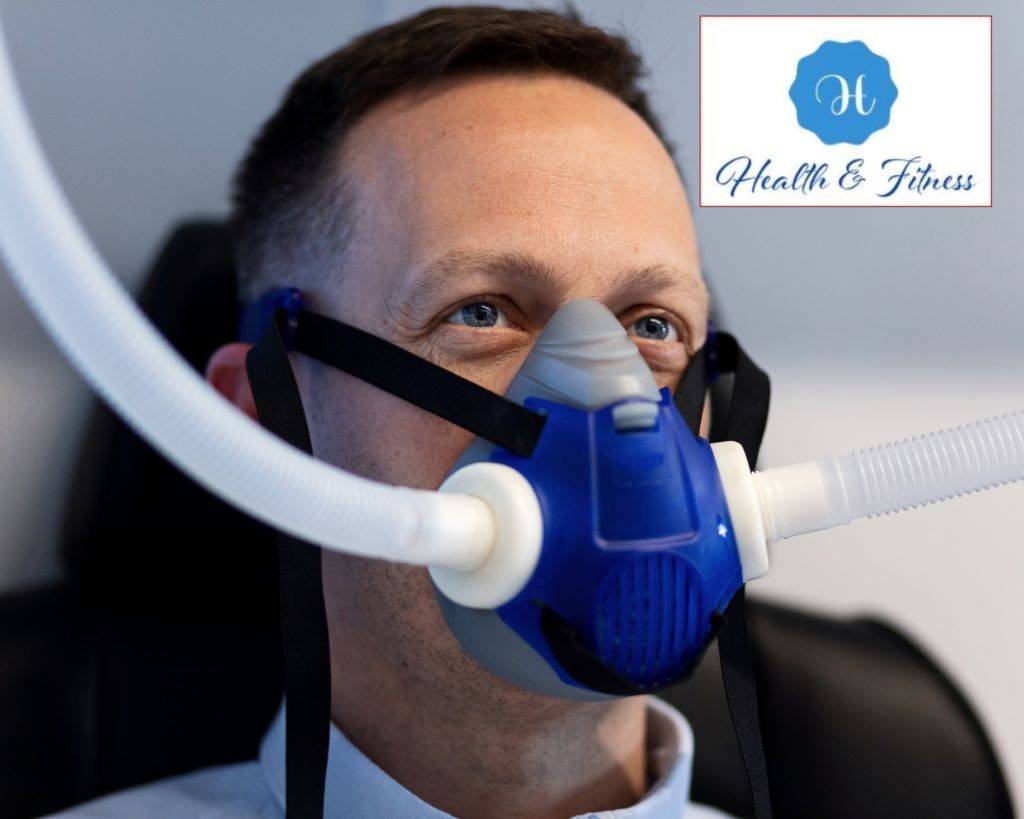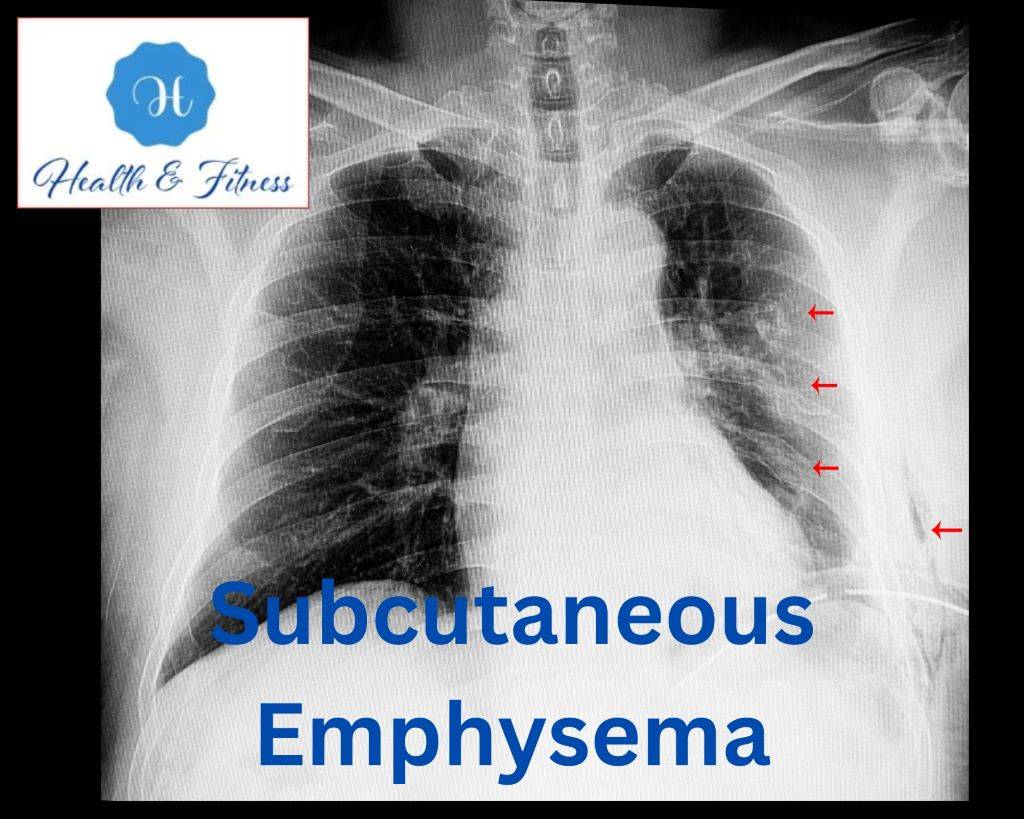Subcutaneous Emphysema: Causes, Symptoms, and Treatment Options
Explore Subcutaneous Emphysema: Learn About Its Causes, Symptoms, and Treatment Choices. Get In-Depth Insights Now!
Introduction
Subcutaneous emphysema is when air becomes trapped under the skin, commonly in the chest or neck. Infections, chest trauma, and medical procedures cause it. Swelling, cracking, and neck/chest discomfort are symptoms. This blog post covers its causes, symptoms, treatment options, prevention, and complications. It’s a helpful resource for those interested in learning about Emphysema cutis.
What is Subcutaneous Emphysema?
Subcutaneous emphysema is a disease that happens when air gets stuck under the skin. The neck and chest are the most prevalent sites for this. When trapped air causes the skin to enlarge or protrude, it may crackle or explode when touched. Subcutaneous emphysema may result from lung infections, chest traumas, and airway surgery. Air trapped in subcutaneous tissue may move through the body and reach the face, causing swelling and aesthetic changes. Subcutaneous emphysema is distinct from other varieties of emphysema, which weaken the lungs and make it hard to breathe. While subcutaneous emphysema can be uncomfortable and severe, it rarely affects lung function. In the following sections, we’ll dive deeper into the causes, symptoms, and treatment options for subcutaneous emphysema.
Common Cause of Subcutaneous Emphysema

Subcutaneous emphysema can be caused by a variety of factors, including:
- Chest trauma:
Blunt-force trauma to the chest, such as a car accident or a fall, can cause air to become trapped under the skin.
- Medical procedures:
Specific medical procedures, such as intubation or a biopsy of the lungs, can also cause subcutaneous emphysema.
- Lung infections:
Infections such as pneumonia or tuberculosis can cause damage to the lungs, which can lead to air becoming trapped under the skin.
- Chronic obstructive pulmonary disease (COPD):
While subcutaneous emphysema is not typically associated with COPD, severe cases of COPD can lead to damage to the lungs that can cause air to become trapped under the skin.
- Spontaneous:
Subcutaneous emphysema may develop for no apparent reason in some people.
Identifying the underlying cause of subcutaneous emphysema is essential for treating the condition properly.
In the next section, we’ll explore the symptoms of subcutaneous emphysema.
Symptoms of Subcutaneous Emphysema

The symptoms of subcutaneous emphysema can vary depending on the severity of the condition and the underlying cause.
Common symptoms include:
- Swelling or bulging of the skin:
One of the most noticeable symptoms of subcutaneous emphysema is the swelling or bulging of the skin.
This is often most visible in the chest or neck but can also occur in other body areas.
- Crackling sensation under the skin:
When the air becomes trapped under the skin, it can create a crackling or popping sensation when touched.
- Pain or discomfort:
Subcutaneous emphysema can cause pain or discomfort in the affected area, ranging from mild to severe.
- Difficulty breathing:
Occasionally, subcutaneous emphysema can cause difficulty breathing if the swelling is severe enough to compress the airways.
- Change in appearance:
If the air travels to the face, it can cause swelling and a change in appearance. If you have any of these symptoms, particularly those accompanied by breathing issues, consult a doctor. In the next section, we’ll explore the treatment options for subcutaneous emphysema.
Diagnosis of Subcutaneous Emphysema

If you have pneumothorax, your doctor will examine it for swelling or a crackling feeling beneath the skin.
Medical professionals may request imaging tests to diagnose and measure the amount of air trapped under the skin. Tests, such as X-rays, CT scans, and ultrasounds, are commonly used for this purpose. Sometimes, your doctor may perform additional tests to identify the underlying cause of pneumothorax. For example, they may order blood tests or a bronchoscopy to check for signs of infection or damage to the airways. You and your doctor must determine its source to treat pulmonary barotrauma and prevent it from returning. In the next section, we’ll explore the treatment options for Emphysema cutis.
Treatment Options for Subcutaneous Emphysema

Treatment for chest wall emphysema typically depends on the severity of the condition and the underlying cause.
Mild cases of chest wall emphysema may resolve independently over time, while more severe cases may require medical intervention.
- Observation:
In mild cases of emphysema cutis, your doctor may observe your condition and monitor any changes.
They may recommend rest, avoiding activities that may exacerbate the condition, and using over-the-counter pain relievers to manage discomfort.
- Oxygen therapy:
Oxygen treatment may be needed to sustain lung function and enhance breathing in situations with chest wall emphysema
- Needle aspiration:
Sometimes, your doctor may use a needle to puncture the skin and release the trapped air.
This is typically only done where the swelling is causing significant discomfort or difficulty breathing.
- Surgery:
In rare cases, surgery may be necessary to remove the trapped air or repair any damage to the lungs or airways.
It’s important to follow your doctor’s recommendations for treatment and attend any follow-up appointments to monitor your condition.
Emphysema cutis may cause infections or lung damage, so it’s crucial to consult a doctor if your symptoms change.
Surgical Treatment for Subcutaneous Emphysema
Surgical treatment for Pneumothorax may be necessary in severe cases, particularly if conservative treatment methods fail to alleviate symptoms. There are several surgical options available, including:
- Subcutaneous emphysema drainage: In this procedure, a small incision is made in the affected area, and the trapped air is released. This may be done under local anesthesia or general anesthesia, depending on the severity of the case.
- Video-assisted thoracoscopic surgery (VATS): VATS is a minimally invasive procedure that uses a tiny camera and surgical instruments to remove trapped air and damaged tissue. This procedure is typically performed under general anesthesia.
- Open surgery: In rare cases, open surgery may be required to remove large pockets of trapped air. This involves making a larger incision and manually removing the trapped air and any damaged tissue.
Surgical treatment for Pneumothorax carries risks, including bleeding, infection, and damage to surrounding tissue. However, surgical intervention may be necessary in severe cases to prevent complications such as pneumothorax or tension pneumothorax. It is essential to consult a medical professional to determine the most appropriate treatment plan for each case.
Home Remedies and Self-Care Tips for Subcutaneous Emphysema
While Emphysema cutis typically requires medical treatment, some home remedies, and self-care tips may help alleviate symptoms and aid recovery. These include:
- Rest: It is essential to rest and limit physical activity to prevent further damage to the affected area.
- Ice pack: Applying an ice pack to the affected area for 15-20 minutes at a time may help reduce swelling and discomfort.
- Warm compress: In some cases, a warm compress may also help alleviate symptoms. Be sure to test the temperature of the compress before applying it to the skin.
- Over-the-counter pain relievers: Nonsteroidal anti-inflammatory drugs (NSAIDs) such as ibuprofen may help reduce pain and inflammation.
- Avoid smoking: Smoking can worsen symptoms and slow the healing process, so it is important to avoid tobacco products.
- Maintain hygiene: Keeping the affected area clean and dry can help prevent infection.
- Follow medical advice: It is essential to follow the medical advice of your healthcare provider, including taking any prescribed medications and attending follow-up appointments.
While these home remedies and self-care tips may provide some relief, it is vital to seek medical attention if symptoms worsen or persist.
Complications of Subcutaneous Emphysema

Subcutaneous emphysema usually is harmless and may cure on its own, although it can sometimes cause difficulties.
Some potential complications of emphysema cutis include:
- Infection:
If the air becomes trapped under the skin for an extended period, it can increase the risk of infection.
- Damage to the lungs or airways:
If the swelling is severe enough, subcutaneous emphysema might affect the lungs or airways.
- Difficulty breathing:
Occasionally, Emphysema cutis can cause difficulty breathing if the swelling is severe enough to compress the airways.
- Discomfort or pain:
Surgical emphysema can cause discomfort or pain, especially if the swelling is significant.
- Cosmetic concerns:
If the swelling is visible on the face or neck, it can cause cosmetic concerns or embarrassment. If you develop new or worsening symptoms, mainly if they cause breathing problems, visit a doctor. In some cases, Emphysema cutis may require medical intervention to prevent complications. Your doctor can recommend the best course of treatment based on the severity of your condition and the underlying cause.
Prevention and Prognosis of Subcutaneous Emphysema
Preventing subcutaneous emphysema can be tricky since underlying medical conditions or injuries often cause it.
However, some measures can reduce your risk of developing the condition:
- Seek prompt medical attention for any injuries or conditions that may increase your risk of subcutaneous emphysema.
2. Follow your doctor’s advice for controlling underlying medical disorders, including asthma or COPD.
3. Avoid activities that may increase your risk of injury or trauma, such as contact sports or risky physical activities.
The prognosis for Emphysema cutis good, and most cases resolve independently without medical intervention. However, in some cases, complications may arise that require medical treatment. The prognosis may also depend on the underlying cause of the Emphysema cutis, as some underlying conditions may be more challenging to manage or require ongoing treatment. Your doctor can provide more information about your specific prognosis based on the severity of your condition and the underlying cause.
Conclusion
Subcutaneous emphysema may heal independently, but if symptoms increase, seek medical help. Preventing Emphysema cuts is challenging, but measures like prompt medical attention and following doctor’s recommendations can reduce the risk. With timely medical intervention, Emphysema cutis can be managed effectively. Stay informed and seek timely medical attention to minimize the risk of complications and maintain good health.
FAQs
What causes subcutaneous emphysema?
Subcutaneous emphysema, in simple terms, is caused when air gets into the layer of tissue that is right beneath the skin. This unusual presence of air can be a result of several reasons:
- Trauma: Injuries that tear the skin or puncture the respiratory tract (like a fractured rib piercing a lung) can cause air to escape into the subcutaneous tissues.
- Surgical Procedures: Some medical procedures can unintentionally introduce air into this space.
- Spontaneous Pneumothorax: This is a fancy term for when a lung collapses, and the air leaks out into the subcutaneous tissue.
- Barotrauma: Rapid changes in air pressure (like when scuba diving) can lead to lung damage and thus, subcutaneous emphysema.
Where is subcutaneous emphysema found in the body?
People commonly observe subcutaneous emphysema around the chest, neck, and face areas, although it can spread to other parts of the body. When you touch the skin in affected areas, it may feel like there’s bubble wrap underneath because of the trapped air bubbles.
What are the stages of subcutaneous emphysema?
Subcutaneous emphysema doesn’t have defined “stages” like some other medical conditions. However, it can vary in severity:
- Mild: Minor air leakage, often limited to a small area, usually resolves on its own.
- Moderate: More extensive spread of air under the skin, often noticeable over a larger area. May require medical observation.
- Severe: Widespread presence of air bubbles, which might cause discomfort or more pronounced symptoms. Medical intervention is typically needed.
Why do doctors administer oxygen in cases of subcutaneous emphysema?
Oxygen is provided to patients with subcutaneous emphysema for a couple of reasons:
- Increase Oxygen Levels: If the underlying cause of the emphysema is related to lung injury, the blood may have compromised oxygen levels. Administering oxygen can help ensure the body gets the oxygen it needs.
- Speed up Healing: When high concentrations of oxygen are given, it helps to reabsorb the air trapped under the skin faster. This way, the body can heal and recover more quickly from the condition.
I hope this helps simplify the topic of Subcutaneous Emphysema for you. Always remember to seek professional medical advice if you or someone you know shows symptoms or has concerns about this condition.



